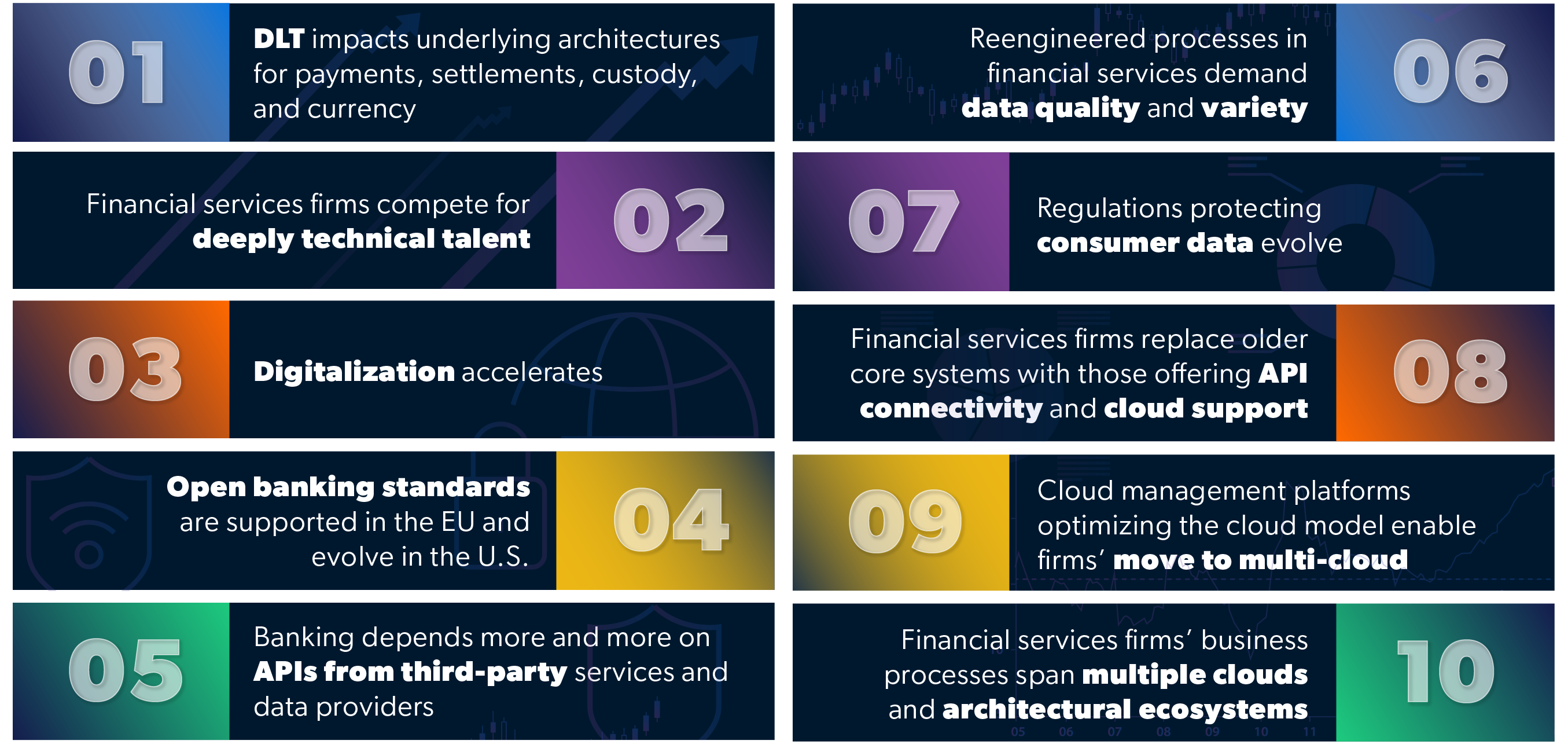It’s a demanding moment in time for IT organizations at financial institutions (FIs), which must maintain regulatory compliance while keeping up with their competitors. As institutions continue to compete for talent, transform digitally, and enhance their data quality and variety, new technologies such as multi-cloud and distributed ledger creep closer upon the horizon.
In 2023, many IT organizations will need to juggle replacement and enhancement projects, new platform implementations, and architecture/structural updates, often putting great pressure on their operations.
Aite-Novarica Group has identified the 10 key trends that will impact IT executives at FIs, including CIOs, CTOs, and heads of architecture, in 2023.

For example:
- Digitalization accelerates. As banks and FIs of all sizes continue the digital transformation journey, they must prioritize customer-centric initiatives that align with strategic objectives. While institutions are at varying stages of their digital journeys at present, this won’t last for long, as they typically name digital as a key priority for 2023. It’s critical that institutions achieve a seamless customer experience if they hope to compete in the 2020s and beyond.
- Reengineered processes in financial services demand data quality and variety. Forward-thinking FIs are utilizing a combination of internal and external data to facilitate processes such as analytics-driven product design, artificial intelligence, and portfolio management. As enriched data increasingly becomes the norm for FIs, safeguards are needed to maintain regulatory compliance.
- FIs’ business processes span multiple clouds and architectural ecosystems. As technology continues to develop, a diverse range of cloud products and services have become available over the past few years. A major driver of the industry shift to multi-cloud is the fact that different approaches are often necessary within the same institution: For example, business use cases requiring enhanced calculation speeds frequently occur in market risk analysis, whereas credit risk has been slower to migrate to cloud due to regulatory obstacles.
- Banking depends more and more on APIs from third-party services and data providers. Institutions relying on third-party services have frequently found themselves responsible for ensuring those services’ regulatory compliance. As regulations continue to increase, FIs will need to assure regulators of the consistency, security, resiliency, and robustness of these APIs.
Forward-looking institutions will set themselves up for success in 2023 and beyond by establishing strong foundations to support concurrent initiatives, including clear ownership structures for new technologies and enterprise IT strategies backed up by digital artifacts.
For a detailed analysis of all top 10 trends for 2023, read the full report Top 10 Trends From Financial Services CIO/CTO Advisory, 2023: The Future Has Arrived. You can also watch the recording of our February 14th webinar, where we explored each of these trends in detail. Click here to access the recording.

